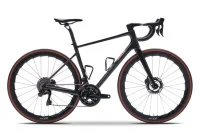A Good Bike Fit: Your Performance Depends On It
Make no mistake: you can be at your physical best, have the lightest, most efficient bicycle in the world and the finest coaches waiting in the wings to hone your skills, and basically, you’re still a toughie on a Huffy without a quality bike fitting. Bike manufacturers can’t know the individual needs of the riders who will be using their equipment. They can only create a superior machine that can be adjusted to accommodate a range of anatomical types and hope their customers are able to figure out the rest. As with James Bond’s suit, you can’t just buy something “off the rack” and expect to look like Daniel Craig. For that you’d need a professional tailor (and maybe a great haircut)…and for cycling without incurring a repetitive motion injury, at the apex of your physical potential and the capabilities of the bike itself, you must have a professional bike fitting with a qualfied and well educated fitter.
What’s Involved in a Great Bike Fitting?
Bike fitting is about matching the rider’s skeletal structure, stance, flexibility and unique physical anomalies (the old injury that makes you move your ankle in a certain way, for example) and posture with the particulars of the bike itself. Once a fit is completed, everything about the bike can is measured, and properly calibrated to work with your individual needs for peak neural functioning, appropriate torso and pelvis support, and maximum pedaling energy. This process isn’t just a question of adjusting gears or tightening a screw, but requires the bike fitter to have a wealth of experience and training to know what works and what doesn’t when it comes to getting you ready for reaching your fullest potential on the super efficient machine we call a bicycle. The bike fitting process is about process and not just tools. Motion capture tools, like Retul and Dartfish, and automated size cycles are nice, but they don't actually provide the fitting; technology can turn into little more than "smoke and mirrors" in the hands of someone more invested in the tools and using it to sell product than the education and process behind bike fitting. Look for a fitter who has a strong collection of tools, but hire the fitter, not the tools… Integrity counts and some places firmly committed and embraced bike fitting well before it was trendy or an accepted requirement when buying a bike. Make sure to interview your fitter before hiring them and don't compromise and choose a fitter just because they are closer to you, do a quicker fit or are cheaper – there are no shortcuts in bicycle fitting and a fitting is an investment that can last and benefit you as long as you ride a bike!
Explore the rest of our Tech Center and site to learn more about what is involved in a professional bike fitting and don't hesitate to ask questions!









